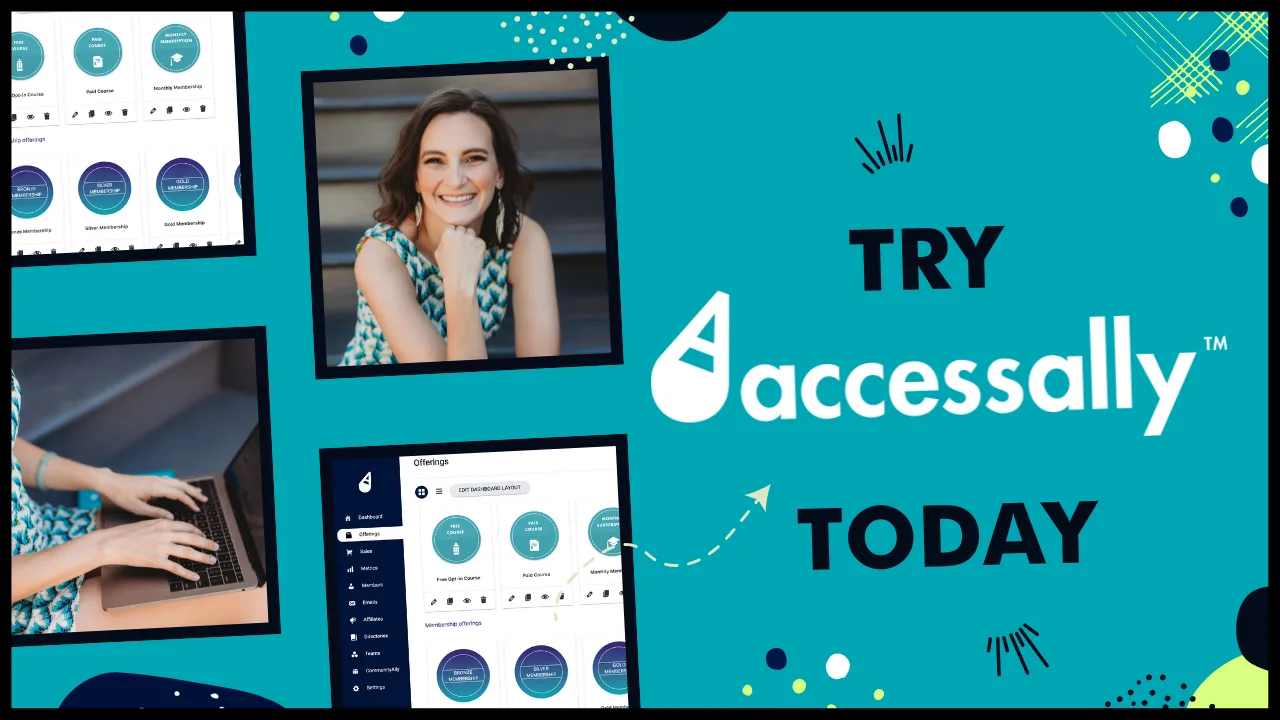Introduction and Overview: Crafting Course Modules That Stick
Creating online courses that truly transform your students’ lives requires more than just dumping information into a series of videos and PDFs. When done right, your course modules should work like perfectly choreographed dance steps – each element building upon the last while keeping your students engaged and moving forward.
Let’s be honest: information retention is one of the biggest challenges in online education. Studies show that learners typically forget 70% of what they’ve learned within 24 hours unless the material is reinforced through strategic design and delivery. That’s why thoughtful module planning isn’t just nice to have – it’s essential for your students’ success.Think of your course modules as chapters in an engaging story. Each section needs to capture attention, deliver value, and create anticipation for what’s coming next.
This guide will explore proven strategies for designing modules that maximize retention and engagement. We’ll look at everything from proper sequencing and pacing to incorporating interactive elements and progress tracking. Whether you’re creating your first course or revamping existing content, these principles will help ensure your students not only complete your course but also retain and implement what they’ve learned.
Ready to transform your course modules from good to exceptional? Let’s dive in.
Foundation Concepts and Planning
Creating practical course modules starts long before you open your course creation software. In the foundation phase, you’ll establish the core elements that will drive meaningful learning and retention for your students.
When done right, your course structure should feel like a natural progression that guides students from where they are to where they want to be. Start by clearly defining your course’s learning outcomes – not just what students will know, but what they’ll be able to do after completing each module. This shifts the focus from passive information consumption to active skill-building.
Consider your typical student’s current knowledge level and daily schedule. Are they busy professionals who need bite-sized lessons they can complete in 15-20 minutes? Or are they diving deep into a comprehensive certification that requires longer, more intensive study sessions? This understanding will help you chunk your content appropriately.
Your module structure should follow the natural flow of skill-building. Think of it like teaching someone to cook – you start with basic knife skills before attempting complex recipes. Each module should build upon previous knowledge while introducing just enough new concepts to challenge students without overwhelming them.


Designing practical course modules for maximum retention – Professional course creation with AccessAlly
Create a content map outlining each module’s key concepts, skills, and transformations. Include specific examples, exercises, and real-world applications that will help cement the learning. Remember that retention happens through practice and application, not just through watching videos or reading text.
Consider incorporating different learning modalities to accommodate various learning styles. While one student might grasp concepts through written explanations, another might need visual demonstrations or hands-on practice. Plan for a mix of content types – video lessons, written summaries, downloadable worksheets, and interactive exercises.
Remember to build in reflection points and knowledge checks throughout each module. These aren’t just assessment tools—they’re crucial moments that help students integrate what they’ve learned and identify areas where they need more practice. Regular progress checks also provide that motivating sense of achievement that keeps students engaged and moving forward.
By investing time in this foundation phase, you’ll create a course structure that naturally supports both learning and retention, setting your students up for genuine transformation and success.
Step-by-Step Implementation Guide
Let’s walk through the practical process of designing course modules that maximize student retention and engagement. When done right, your course structure will naturally guide students toward those transformative “aha” moments while maintaining their motivation throughout the journey.
Start by mapping out your module’s core learning objective. Rather than diving straight into content creation, clearly define what students should be able to do after completing the module. For example, if you’re teaching social media marketing, a specific objective might be “Create an engaging Instagram content calendar for the next 30 days.”
Next, break down your content into 5-10 minutes of digestible chunks each. The human brain processes information most effectively in shorter segments. Think of each segment as a mini-story with its beginning, middle, and end. This approach helps students maintain focus and progressively build their understanding.
Structure your module with a strong opening that connects to students’ existing knowledge and pain points. Share a relevant case study or real-world example illustrating why this particular skill or concept matters. This creates an emotional hook that helps anchor the learning in their memory.
Include frequent knowledge checks throughout the module, but avoid traditional multiple-choice quizzes. Instead, incorporate interactive elements like scenario-based questions, practical exercises, or reflection prompts. These active learning components help students apply concepts immediately and strengthen neural pathways for better retention.
Consider implementing a “spiral learning” approach where key concepts are revisited from different angles. For instance, if you’re teaching photography basics, introduce aperture settings early on, then circle back to them when discussing portrait photography, landscape shots, and low-light situations. Each spiral deepens understanding while reinforcing previous learning.
Remember to build in deliberate practice opportunities. Create worksheets, templates, or guided exercises that allow students to implement what they’ve learned. For example, a web design module might include a wireframing exercise where students apply newly learned principles to create their own homepage layout.
End each module with a synthesis activity that connects all the pieces. This could be a capstone project, a peer review session, or a self-reflection exercise. The goal is to help students see how individual concepts fit into the bigger picture and prepare them for real-world application.
Remember to provide clear transition points between modules. Create natural bridges that show how each new section builds upon previous learning while maintaining student momentum. By following these implementation steps and focusing on practical application, you’ll create course modules that don’t just deliver information but truly transform your students’ capabilities.
Advanced Strategies and Techniques for Maximum Retention
Let’s dive into sophisticated approaches that can transform your course modules from good to exceptional. These advanced techniques can dramatically boost student engagement and information retention when done right.
First, consider implementing progressive complexity through micro-challenges. Instead of overwhelming students with complex concepts, break them into smaller, interconnected tasks that build upon each other. For example, if you’re teaching advanced photography, start with basic composition exercises that gradually incorporate lighting techniques, then advanced editing skills. This layered approach helps students build confidence while mastering increasingly complex material.
Incorporating retrieval practice is another powerful strategy that’s often overlooked. Rather than simply presenting information, create strategic pause points within your modules where students must actively recall and apply what they’ve learned. This could involve short quizzes, practical exercises, or even teaching concepts to fellow students.
Consider implementing what I call the “reflection spiral” technique. At the end of each module, guide students through a structured reflection process that connects back to previous modules while looking ahead to upcoming content. This creates a continuous learning loop that reinforces key concepts and maintains engagement throughout the course. You can learn more about creating effective training modules in our comprehensive guide.
Adaptive learning paths are becoming increasingly important in modern course design. Use conditional content release features to create personalized learning experiences based on student performance and preferences. This ensures that advanced students remain challenged while those needing additional support receive it automatically.
Remember to incorporate regular feedback loops that go beyond simple assessments. Create opportunities for students to discuss their progress, share challenges, and celebrate victories. This social learning component not only enhances retention but also builds a supportive community around your course content.
Common Challenges and Solutions in Course Module Design
When creating course modules, even experienced course creators encounter several recurring challenges. Let’s explore these hurdles and their practical solutions to help you create more engaging learning experiences.
One of the most frequent obstacles is content overload. Unfortunately, many creators pack their modules with excessive information, hoping to deliver maximum value. This approach often backfires, leading to overwhelmed students and decreased retention. The solution is to break your content into digestible chunks, focusing on one core concept per module. Consider the 20-minute rule: if a lesson takes longer than 20 minutes to complete, it probably needs splitting into smaller segments.
Another common challenge is maintaining consistent engagement throughout the module. Students often start strong but lose momentum halfway through. To combat this, incorporate interactive elements at strategic intervals. This could mean adding a quick implementation exercise every few minutes, inserting relevant case studies, or including short quizzes that reinforce key concepts.
Technical barriers can also frustrate both creators and students. While you might be tempted to use cutting-edge tools and features, remember that simplicity often wins. Focus on creating a user-friendly experience with clear navigation and consistent formatting. If you’re using AccessAlly, take advantage of its built-in progress tracking and achievement tools to help students stay motivated.
Assessment effectiveness is another crucial concern. Many modules either lack proper evaluation methods or rely too heavily on traditional testing. The solution is to implement varied assessment types that reflect real-world application. Consider incorporating project-based assignments, peer reviews, or practical demonstrations of skills learned.
Lastly, modules sometimes fail to connect with students’ real-world needs. To address this, start each module with a clear explanation of how the content applies to students’ goals or challenges. Include practical examples from your experience or your successful students’ journeys. Remember to provide templates or frameworks that students can immediately apply to their own situations.
Best Practices and Optimization for Course Module Design
Creating effective course modules requires a delicate balance between engagement and information delivery. When done right, your modules will naturally guide students through a journey of discovery while maintaining their interest and boosting retention.
Start by establishing a consistent structure across all modules. Your students need to develop a learning rhythm, so maintain similar patterns for content presentation, practice exercises, and assessments. Think of it as creating a familiar environment where learners can focus on the material rather than figuring out how to navigate each new section.
Module length plays a crucial role in retention. Research from the Campaign Monitor Learning Lab suggests that optimal learning segments should last between 15-20 minutes. Break down complex topics into digestible chunks, and include interactive elements every 5-7 minutes to maintain engagement. This could be as simple as adding a quick reflection question or a practical exercise.
Consider implementing the “sandwich method” for your module structure. Begin with a clear overview of what students will learn, followed by the core content, and end with a practical application or summary activity. This approach helps create stronger neural connections and improves information retention.
Pay special attention to your multimedia mix. While videos are powerful learning tools, they shouldn’t be your only medium. Incorporate downloadable resources, audio clips, and interactive quizzes to cater to different learning styles. Students will process information more effectively when it’s presented through multiple channels.
Don’t forget to build in opportunities for reflection and implementation. Include action items at the end of each module that encourage students to apply what they’ve learned to their specific situation. These practical exercises bridge the gap between theory and real-world application, significantly boosting retention rates.
Remember to regularly review and optimize your modules based on student feedback and completion rates. Track which sections receive the most engagement and which ones see the highest drop-off rates. Use these insights to continuously refine your course structure and delivery methods.
Case Studies and Examples: Learning from Successful Course Modules
Let’s dive into some real-world examples that showcase how thoughtful module design can dramatically improve student retention. When done right, these strategies create engaging learning experiences that stick with students long after course completion.
Consider Sarah’s photography masterclass, which initially struggled with a 35% completion rate. By restructuring her lighting technique module into bite-sized, 10-minute video lessons followed by immediate practical assignments, completion rates jumped to 78%. The key was breaking down complex concepts into manageable chunks and providing instant application opportunities.
Another compelling example comes from Mark’s digital marketing course. Instead of frontloading theory, he redesigned his Facebook Ads module to begin with a quick win: students create their first targeted ad within 30 minutes of starting. This early success builds confidence and motivates students to tackle more challenging concepts later. His approach led to a 92% student satisfaction rate and significantly higher engagement throughout the course.
The Business Writing Academy faced a common challenge: students weren’t retaining technical writing principles. Their solution? They incorporated spaced repetition by creating “micro-review” segments at the start of each new lesson. These five-minute refreshers naturally weave previous concepts into new material, reinforcing learning without feeling repetitive.
A particularly innovative approach comes from Elena’s coding bootcamp. She implemented what she calls the “build-break-fix” method: students first create a working piece of code, then intentionally break it, and finally troubleshoot the issues. This hands-on problem-solving approach resulted in an 85% increase in concept retention compared to traditional teaching methods.
One of my favorite examples is from The Culinary Institute’s online program. They transformed their traditional recipe-based modules into story-driven lessons, where each cooking technique is taught through the lens of its historical development and cultural significance. This contextual learning approach has doubled student engagement and improved technique mastery by 60%.
These success stories share common elements: they break down complex information, provide immediate application opportunities, and create emotional connections to the material. By incorporating these principles into your own course design, you can create modules that don’t just teach, but truly transform your students’ capabilities.
Future Considerations and Conclusion
As the online education landscape continues to evolve, your course modules need to stay adaptable and future-ready. When done right, your training modules should be flexible enough to accommodate emerging technologies and changing student needs without requiring a complete overhaul.
Consider incorporating artificial intelligence and machine learning capabilities into your course structure. These technologies can help personalize learning paths, provide real-time feedback, and identify areas where students might need additional support. However, remember that technology should enhance, not replace, the human element of learning.
Looking ahead, mobile-first learning will become increasingly important. Ensure your modules are optimized for various devices and include microlearning segments that students can easily digest during short breaks. This approach aligns with modern learning habits while maintaining educational effectiveness.
Data analytics will play a crucial role in module refinement. Set up systems to track completion rates, engagement levels, and learning outcomes. This information helps you make informed decisions about module improvements and identify content that resonates most with your students.
Community-based learning is another trend worth considering. Design your modules to facilitate peer-to-peer interactions and collaborative projects. These connections often lead to better retention and a more enriching learning experience.
Remember that successful course design is an iterative process. Regularly gather feedback from your students and be prepared to make adjustments based on their experiences and changing industry demands. Pay attention to both quantitative metrics and qualitative feedback to guide your improvements.
Your course modules should ultimately create transformative learning experiences that stand the test of time. Focus on building a strong foundation that can evolve with your students’ needs while maintaining the core principles of effective learning. By staying mindful of these future considerations, you’ll create course modules that remain relevant and impactful for years to come.



